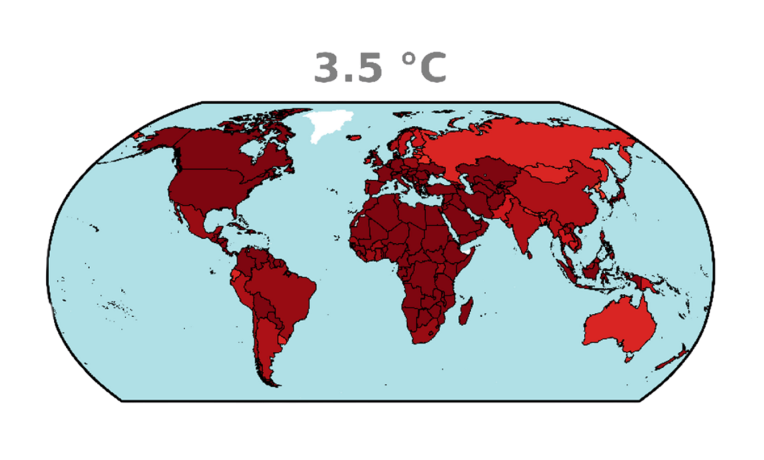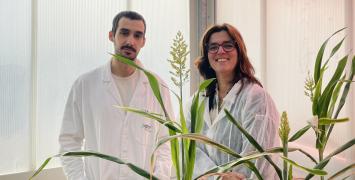Study highlights disproportionate climate risk to children worldwide

The research, led by climate scientists at Vrije Universiteit Brussel (VUB) and funded by the European Research Council (ERC), estimates that under current policies, children will be exposed to markedly more frequent climate extremes, including heatwaves, droughts, floods, wildfires, crop failures and tropical cyclones. The findings underscore how crucial climate policy decisions taken today will shape the environmental future faced by younger generations.
Projected exposure to climate extremes
The study assessed potential lifetime exposure to climate extremes under various global warming scenarios. If global temperatures were to rise by 3.5°C by the end of the century, over 90% of children born in 2020 would face unprecedented levels of heatwave exposure. By contrast, limiting global temperature rise to 1.5°C, in line with the Paris Agreement, could protect around 49 million of them from this risk, reducing this figure by nearly half. Taking into account all children aged 5 to 18 today, this equates to 1.5 billion children affected under a 3.5°C scenario, versus 855 million under a 1.5°C scenario.
The study also finds stark disparities in exposure based on socioeconomic vulnerability. Among children born in 2020, 95% of those in the most vulnerable group are expected to face unprecedented heatwave exposure during their lifetime, compared with 78% of those in the least vulnerable group.
‘In 2021, we demonstrated how children are to face disproportionate increases in extreme event exposure – especially in low-income countries. Now, we examined where the cumulative exposure to climate extremes across one’s lifetime will far exceed that which would have been experienced in a pre-industrial climate,’ says Professor Wim Thiery, senior author, climate scientist at VUB and ERC grantee.
Generational and regional inequalities
Using climate model projections and global demographic data, the researchers assessed exposure to six types of climate extremes: heatwaves, droughts, wildfires, crop failures, river floods, and tropical cyclones. The analysis reveals a clear generational divide: the younger a person is today, the more climate extremes they are likely to experience over their lifetime.
Lead author Dr Luke Grant (VUB and Environment and Climate Change Canada) explains that the research introduces the concept of ‘unprecedented life’—a lifetime in which an individual faces climate extremes that would have had less than a one-in-10,000 likelihood of occurring in a pre-industrial climate.
‘In this new study, living an unprecedented life means that without climate change, one would have less than a 1-in-10,000 chance of experiencing that many climate extremes across one’s lifetime. This is a stringent threshold that identifies populations facing climate extremes far beyond what could be expected without man-made climate change,’ adds Grant.
The generational divide is large and growing: children born more recently are significantly more likely to face these extremes. For example, under a 1.5°C warming scenario, 52% of those born in 2020 would still experience unprecedented heatwave exposure, compared to only 16% of those born in 1960.
The study also points to global inequality in climate risk, with children in tropical regions facing higher levels of exposure even under lower-emission scenarios.
Need for ambitious climate action
The findings arrive ahead of COP30 in Brazil, where governments are expected to submit updated climate targets. Current trajectories suggest global warming could reach approximately 2.7°C this century. However, the study and an accompanying report by Save the Children argue that achieving the 1.5°C target of the Paris Agreement remains essential to minimise long-term climate impacts on today’s youth.
Inger Ashing, CEO of Save the Children International, says: ‘Across the world, children are forced to bear the brunt of a crisis they are not responsible for. Dangerous heat that puts their health and learning at risk; cyclones that batter their homes and schools; creeping droughts that shrivel up crops and shrink what’s on their plates. Amid this daily drumbeat of disasters, children plead with us not to switch off. This new research shows there is still hope, but only if we act urgently and ambitiously to rapidly limit warming temperatures to 1.5 °C, and truly put children front and centre of our response to climate change.’
‘With global emissions still rising and the planet only 0.2 °C away from the 1.5 °C threshold, world leaders must step up to reduce greenhouse gas emissions and lessen the climate burden on today’s youth,’ concludes Thiery.
About the study
The research was conducted by an international team from Vrije Universiteit Brussel (VUB), Environment and Climate Change Canada, KU Leuven, the Royal Meteorological Institute of Belgium (RMI), and ETH Zurich. It combines climate model projections with demographic data to assess generational exposure to extreme weather events.
For further information, visit the Nature article or consult the accompanying Save the Children report.





